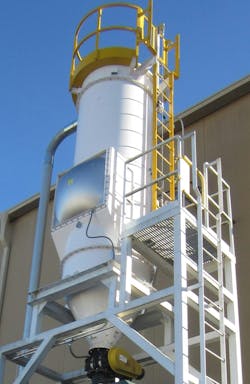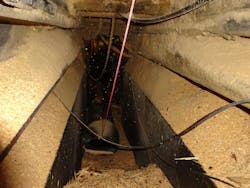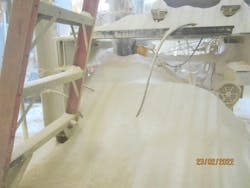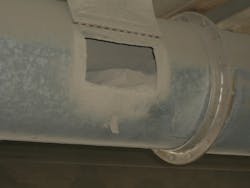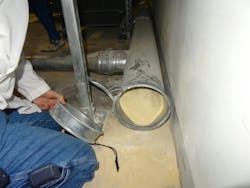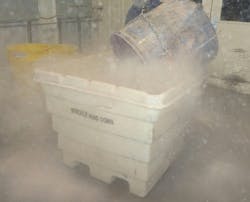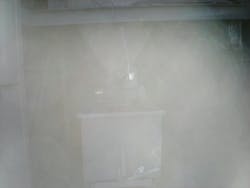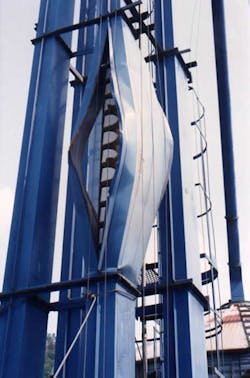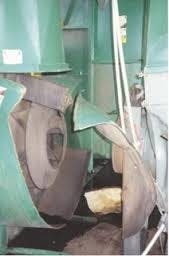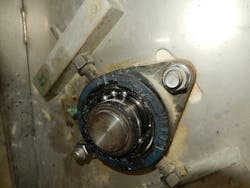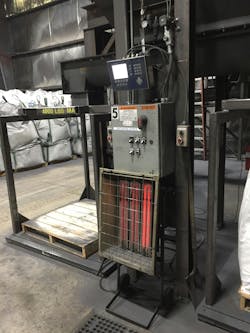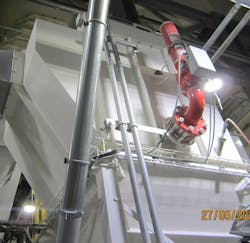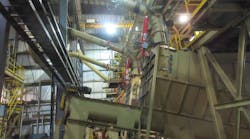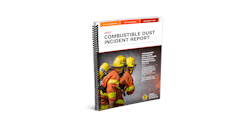Combustible dust compliance is the implementation of and adherence to the standards and recommendations of publicly recognized authoritative sources for the elimination and/or mitigation of combustible dust hazards and resulting risks associated with the creation, processing, and handling of combustible dusts.
That definition is quite a mouthful, but any facility that processes and/or creates combustible dusts is directly exposed to hazards that can lead to disastrous results. Facilities can either eliminate or mitigate these hazards through compliance with the standards and recommendations provided in the NFPA 61, 484, 652, 654, and 664 combustible dust standards (and the upcoming combined NFPA 660 standard). Additionally, this leads to further NFPA sources such as NFPA 70 (National Electric Code), NFPA 68 (basically covering explosion venting), and NFPA 69 (basically all other methods of deflagration mitigation).
The NFPA codes, standards, and recommendations are not the only sources, but they are critical to combustible dust compliance. Other examples include the International Fire and Building Codes, which presently mandate compliance with NFPA 652, etc.
Combustible dust compliance does not mean that plant owners/operators must become “experts” regarding the appropriate combustible dust standards. However, these individuals and companies are responsible for addressing these hazards and associated risks, as evidenced by the recent criminal convictions of Didion Milling and Corporate personnel. Combustible dust compliance does mean being truthful in evaluating the associated hazards and risks and then applying common-sense solutions.
First, it is critical to fully comprehend the characteristics of the combustible dust or dusts. Not all combustible dusts represent the same level of hazards and risks. I strongly recommend testing materials for combustibility and explosivity characteristics. This includes whether the material is a viable fire hazard in addition to an explosion or deflagration hazard. Also, test for explosivity characteristics such as Kst, Pmax, minimum ignition energy (MIE) and minimum explosive concentration (MEC). Kst and Pmax are required to determine explosion mitigation requirements. MIE and MEC are critical for understanding the level of hazard and risks involved with a material. Basically, the lower the values for MIE and MEC, the higher the hazard and risk levels.
Also consider the bulk-handling characteristics of the combustible dust, such as adhesion/cohesion, flowability, bulk density, moisture content, and possible reactions to other materials, etc. The material characteristics must be fully understood to truly comprehend the hazards and risks involved.
Second, complete a dust hazards analysis (DHA). Even though all industries handling combustible dusts should have already completed this task, many have not. Additionally, many DHAs that have been done were poorly executed or have not resulted in any true effort to eliminate or mitigate the determined hazards and associated risks. To not complete this task is to deliberately ignore the need to thoroughly evaluate existing or future (for new systems) combustible dust hazards and risks. Completing this task is common sense. To ignore the need for an effective DHA is to willingly accept the possibility of disastrous “events.”
Third, follow the “good practices” as listed in Chapter 8 (Management Systems) of NFPA 652. This includes additional common-sense activities such as effective housekeeping, safe hot work, personal protection equipment (PPE), management of change (MOC), personnel training, handling of contractors, incident investigation, and emergency planning. These “management (of hazards and risks) systems” represent the most effective, yet usually lower cost, methods for hazard and risk elimination and mitigation.
Fourth, evaluate your processes in relation to the presence and influence of combustible dusts and in relation to Chapter 9 (Hazard Management: Mitigation and Prevention) of NFPA 652.
Figures 1 through 3 illustrate the hazards created by excessive combustible dust accumulations in processing plants. If no fuel (in this case, combustible dust) is present, then no fire, flash-fire, or explosion can occur.
Equally problematic is poor dust collection system design. Chapter 9 (of all NFPA combustible dust standards) provides dust collection standards to eliminate and minimize the possibility of combustible dust accumulations. However, if the system is not designed according to the standards, it is not combustible dust compliant.
Figures 4 and 5 illustrate improper system design and inadequate air velocity to keep the ducts clean. If the dust collection system is designed improperly, it will fail, and dust will accumulate in the ducts. The dust collection systems shown are obviously not combustible dust compliant and are increasing the facility’s hazard and risk level rather than eliminating or minimizing hazards and risks.
Dust collection is required anywhere explosion/flash-fire hazards exist. Figure 6 shows manual dumping of low MIE and MEC dusts by an operator into a plastic tote. In this case, electrostatic charges represent a major hazard for flash-fires. Personnel can produce up to 25 mJ of electrostatic charge, which is sufficient for a flash-fire in this situation. Combustible dust compliance in this case would involve eliminating this method of hand dumping and using a metal container (or equivalent) instead of a plastic tote.
Figure 7 shows a dense cloud of agricultural combustible dusts created by uncontrolled discharge from a bottom-dump semi-trailer. The truck engine is running during this process and represents an immediate, viable ignition source for a flash-fire or explosion. Combustible dust compliance in this case involves operational controls (turning off the truck engine) and dust collection.
Figure 8 shows the discharge from a hopper of combustible coal dust. This situation had already resulted in one flash-fire, though the owner/operator did not correct the problem. Combustible dust compliance in this case would involve both operational improvements and effective dust collection.
Bucket elevators also represent known major hazards for multiple industries. An explosion in a bucket elevator can propagate and result in multiple secondary events, which are preventable. Combustible dust compliance for bucket elevators can include dust collection, explosion mitigation and isolation, and monitoring. Figures 9 and 10 illustrate bucket elevators in which explosions have occurred.
Bearing failure is one of the major ignition sources for combustible dust events. Figure 11 shows a failed bearing on a Z bucket conveyor that has not been replaced. Over time, heat generated by this failed bearing can lead to embers in the conveyor, which can provide the energy for an explosion event. Combustible dust compliant methods include simple inspection or continuous monitoring of key bearings.
Combustible dust compliance also means recognizing and eliminating potential ignition sources. Figure 12 shows an open, hot electric light bulb in a location where a dust explosion-proof light should be installed. Figure 13 shows an electric radiant heater in an area where dust clouds can occur due to upset operational conditions. Using heaters that are not potential sources of ignition is an example of combustible dust compliance.
An air-material separator (AMS) — dust collector, filter receiver, cyclone, etc. — inherently generates a continuous combustible dust cloud during normal operation. AMS devices that represent an explosion (and possible fire) hazard require mitigation for combustible dust compliance. Figure 14 shows typical explosion venting for a filter receiver. Figure 15 shows explosion suppression for a dust collector.
Combustible dust compliance is not rocket science. It usually involves recognizing a hazard and its associated risks and then determining the best method, using all available sources, for either eliminating or mitigating the hazard. By seeking and achieving combustible dust compliance, processors can rest assured that any combustible dust hazards and associated risks in their plants are either eliminated or mitigated to a point where they can be controlled.
Jack Osborn ([email protected]) is a senior project engineer at Airdusco Engineering and Design Services and a member of Processing’s editorial advisory board. He has more than 47 years of experience in dust collection systems, centralized vacuum cleaning systems, pneumatic conveying systems, and all types of bulk handling systems and is a participating member of all six NFPA combustible dust committees (61, 484, 652, 654, 664, and Correlating).
Airdusco EDS
www.airdusco.com
